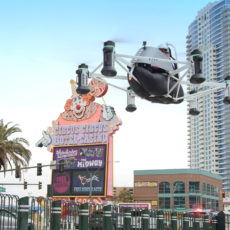
KAIST (Korea Advanced Institute of Science and Technology) researchers have developed PIBOT, the world’s first humanoid pilot robot capable of understanding manuals written in natural language as well as flying a real plane autonomously. The team used AI and cutting edge robot technologies to demonstrate that the humanoid could sit in an actual cockpit as well as operate the controls without modifying any part of the aircraft.
This early prototype is already able to memorize Jeppeson charts, which are essentially flight procedures in graphic form, and can use ChatGPT to respond immediately to various situations, direct from the Quick Reference Handbook (QRF). In simulations, PIBOT had no issues calculating safe routes in real-time based on the aircraft’s flight status and even boasted emergency response times quicker than human pilots. It’s currently able to start the aircraft, taxi, takeoff / land, cruise, and cycle using a flight control simulator.
- Realistic yoke controls offer an ideal setup for new pilots and help experienced pilots build muscle memory. In the Box : Flight Yoke with 5.9 ft...
- Stainless Steel Yoke Shaft - Robust, smooth and accurate control of your virtual aircraft in flight simulators
- POV Hat, 14 button controls, and 3-position mode switch offer at least 54 programmable controls, giving you most of your aircraft’s functions under...

Humanoid pilot robots do not require the modification of existing aircrafts and can be applied immediately to automated flights. They are therefore highly applicable and practical. We expect them to be applied into various other vehicles like cars and military trucks since they can control a wide range of equipment. They will particularly be particularly helpful in situations where military resources are severely depleted,” said David Hyunchul Shim, Professor from the KAIST School of Electrical Engineering (EE).










